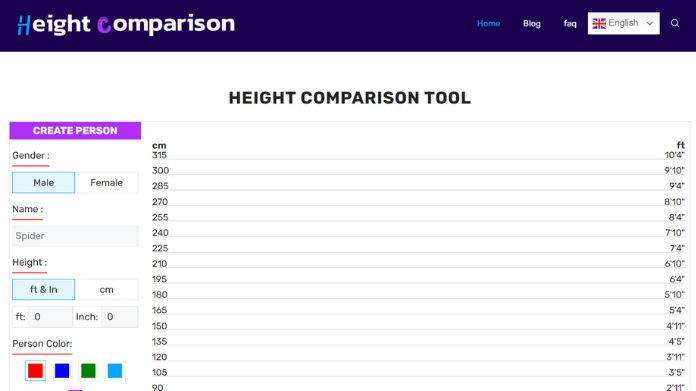Embarking on the journey of understanding height differences between boys and girls requires a nuanced exploration of biological, environmental, and societal factors.
Height, a fundamental measure of human development, reflects a complex interplay of genetics, nutrition, and cultural influences.
This Height Comparison guide delves into the multifaceted realm of height comparison, unravelling the dynamics contributing to variations between boys and girls.
From genetic markers to growth charts and the societal perceptions of height, this guide navigates the diverse factors shaping the heights of individuals across genders, aiming to provide a holistic understanding of the intricacies involved in height comparisons.
What is the Concept of Height Comparison?

The concept of height comparison involves assessing and comparing the relative heights of objects, individuals, or any other entities. It is a method used to determine the difference in vertical dimensions between two or more things.
This comparison can be made using various units of measurement, such as inches, centimetres, or feet. Height comparison is often used in multiple fields, including architecture, engineering, sports, and everyday life.
It allows for a better understanding of the scale and proportion of objects, helping to make informed decisions and evaluations.
How to Navigate Growth and Height Differences Between Girls and Boys?
When navigating growth and height differences between girls and boys, there are a few things to remember. Firstly, it’s essential to understand that boys and girls go through growth spurts at different times and rates. While girls generally experience their growth spurts earlier than boys, boys tend to have a more extended growth period overall.
It’s also important to remember that genetics play a significant role in determining height. If both parents are tall, it’s more likely that their children will also be tall. However, other factors, such as nutrition and overall health, can influence a child’s growth and development.
As a parent or caregiver, it’s essential to provide a balanced and nutritious diet to support healthy growth. This means ensuring that children have access to various foods that provide necessary nutrients like protein, calcium, and vitamins. Regular exercise and physical activity also benefit overall growth and development.
Promoting self-acceptance and body positivity is essential in managing height differences between girls and boys. Teach children that everyone’s body is unique, and that height does not define their worth or capabilities. Please enable them to focus on their strengths, talents, and interests rather than comparing themselves to others.
Creating an inclusive environment where individual differences are celebrated can help children feel comfortable and confident in their skin. Encourage open discussions about diversity and acceptance, emphasizing the importance of treating others with compassion and respect.
If there are concerns about a child’s growth or development, it’s always best to consult a healthcare professional. They can provide guidance, monitor growth patterns, and address any underlying issues affecting height.
Overall, navigating growth and height differences between girls and boys requires understanding, support, and a focus on promoting overall well-being and self-acceptance.
How to Calculate Height Using Online Height Comparison Tool?

To calculate height using an online height comparison tool, follow these steps:
1. Find a reliable online height comparison tool like the Height Comparison Tool. There are several available on the internet, so make sure to choose one that is reputable and widely used.
2. Access the online tool by visiting its website or downloading its app, if available.
3. Open the tool and navigate to the height comparison feature. This is usually located on the main page or in a dedicated section of the tool.
4. Input your height. Most height comparison tools require you to enter your height in either feet and inches or centimeters.
5. Select the comparison option. Some tools allow you to compare height with a specific person or group. Choose the option that suits your needs.
6. Enter the necessary information for the comparison. Depending on the tool’s requirements, this may include the person’s height or the group’s average height.
7. Click on the “Calculate” or “Compare” button to initiate the height calculation.
8. Wait for the tool to process the information and generate the results. The tool will typically display the height comparison clearly and concisely.
9. Review the calculated height. Take note of the comparison results, which may indicate whether you are taller or shorter than the person or group you selected.
10. Repeat the process to compare your height with different individuals or groups.
Remember, while online height comparison tools can provide estimates, they may only sometimes be 100% accurate. Factors like posture, footwear, and measurement variations can affect the results. Therefore, using these tools as a fun way to compare heights rather than relying on them for precise measurements is best.
Conclusion
In wrapping up our exploration of how to make a height comparison between boys and girls, we find ourselves at the intersection of biology, environment, and societal influences.
Understanding height dynamics requires a holistic approach, acknowledging the diverse factors that contribute to individual and gender-specific growth.






